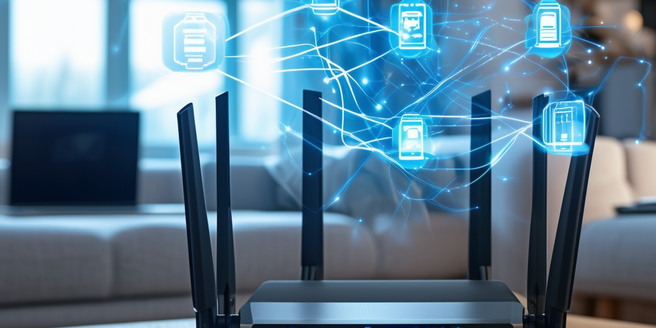
Understanding the Basics of Home Network Security
Understanding the basics of home network security is essential for safeguarding your personal information and devices. Begin by familiarizing yourself with common threats such as malware, phishing attacks, and unauthorized access. Basic security measures include changing default passwords, enabling WPA3 encryption, and regularly updating devices connected to your network. Don’t overlook the importance of regularly checking for firmware updates from your device manufacturers. Implementing these steps can greatly reduce your vulnerability to attacks. In addition, segment your network to isolate critical devices from everyday gadgets. Stay informed about the latest security trends and practices to ensure a robust defense against cyber threats.
Choosing the Right Router for Your Needs
Selecting the right router is vital for both performance and security. Consider a router that supports the latest encryption standards, such as WPA3, and offers features like guest networks and parental controls. Having a firewall feature embedded can also enhance your network’s security. Dual-band or tri-band routers can manage network traffic more efficiently, ensuring optimal performance. Look for routers with robust firmware that receive regular updates to protect against vulnerabilities. Assess your home’s layout and size to determine the range and coverage needed. A secure router forms the backbone of a safe and efficient home network.
Setting Up Strong Passwords and Encryption
Setting up strong passwords and encryption is crucial for securing your home network. Start by creating complex, unique passwords for your router and connected devices. Avoid common passwords and personal information. It’s important to educate yourself on best password practices to stay ahead of potential threats. Enable WPA3 encryption on your router to ensure data is transmitted securely between devices. Regularly update passwords and use a password manager to track them. Consider implementing two-factor authentication (2FA) for an additional layer of security. By prioritizing strong passwords and encryption, you significantly reduce the risk of unauthorized access.
Enabling Network Firewalls and Antivirus Software
Enabling network firewalls and antivirus software is a fundamental step in protecting your home network. Firewalls act as a barrier between your devices and potential external threats, monitoring and controlling incoming and outgoing traffic. Ensure your router’s firewall is enabled and consider setting up additional software-based firewalls on individual devices. Integrating these security measures can significantly reduce the risk of unauthorized access. Install reputable antivirus software to detect and eliminate malware and other malicious threats. Regularly update these tools to keep them effective against new vulnerabilities. These protective measures are essential for maintaining a secure digital environment.
Updating Firmware and Software Regularly
Regularly updating firmware and software is critical to securing your home network. Manufacturers frequently release updates to address security vulnerabilities and improve performance. Check for firmware updates for your router and apply them as soon as they are available. Often, these updates come with bug fixes that enhance overall device functionality. Similarly, keep all connected devices, including computers, smartphones, and IoT devices, up to date with the latest software patches. Enable automatic updates where possible to ensure you don’t miss critical updates. Keeping your firmware and software current is a proactive step toward robust network security.
Monitoring and Managing Connected Devices
Monitoring and managing connected devices is essential for a secure home network. Regularly review the devices connected to your network and remove any that are unfamiliar or no longer in use. Use your router’s management interface to view and control device access. Implementing device-specific rules can limit access rights and minimize potential vulnerabilities. Consider setting up alerts for new device connections and unusual activity. Constant vigilance over your network’s activity can help prevent unauthorized access. By actively managing connected devices, you can quickly detect and respond to potential security threats, ensuring a safer network environment.
